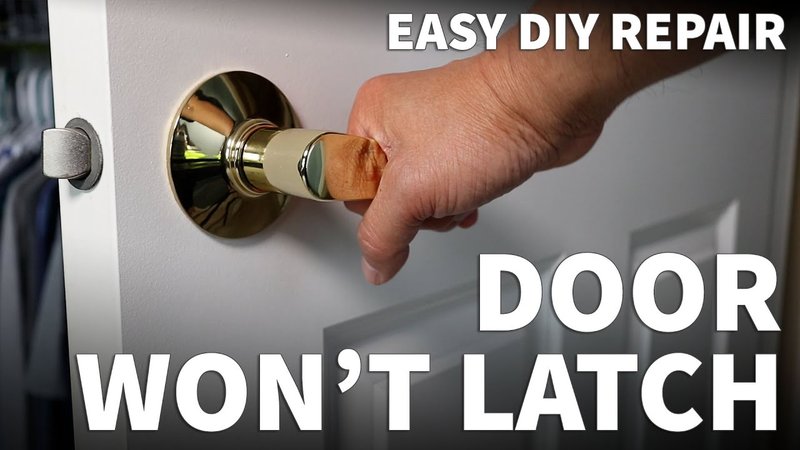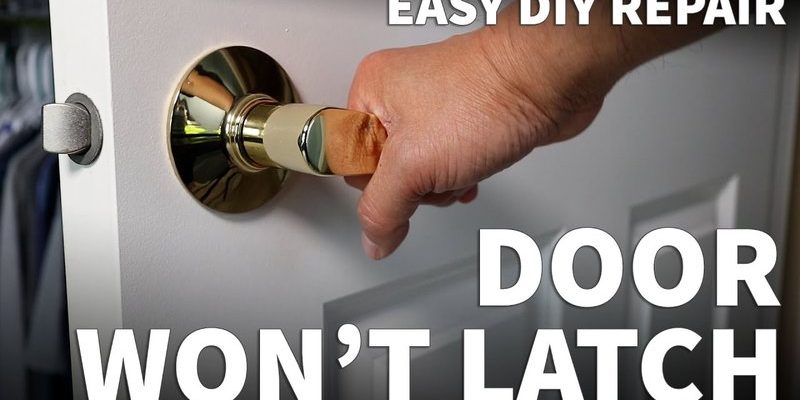
This situation can happen with various types of door knobs, whether it’s a standard one or a more modern electronic lock from brands like Schlage or Kwikset. The good news is that this problem is often fixable with a little troubleshooting. Let’s dive into it!
What Is a Door Knob Cam and Latch Follower?
To understand why your door knob’s cam isn’t engaging the latch follower, it’s important to know what these components are. The cam is a small, rotating piece inside the door knob. When you turn the knob, the cam moves and is supposed to push the latch follower into the door jamb, allowing the door to open.
On the other hand, the latch follower is usually a metal piece that retracts the latch when engaged. Think of it like a key opening a lock. If the cam works but doesn’t engage the follower, you’ve got a mismatch in your door’s locking mechanism. It’s a bit like trying to turn on a light without a light bulb—something is missing to complete the circuit.
Common Causes of Engagement Issues
There are several reasons why the cam might not engage the latch follower as it should. Here are some common culprits:
- Misalignment: If the door or the knob isn’t aligned properly, the cam may not line up with the latch follower when you turn the knob. This misalignment can be caused by changes in weather, shifting foundations, or simply wear and tear.
- Wear and Tear: Over time, the cam and latch follower can become worn down, making it harder for them to engage. Think about how gears in a clock wear out after years of ticking.
- Dirt and Debris: Dust, dirt, or even pet hair can get lodged in the mechanism, preventing smooth operation. Just like a slow computer, a dirty knob can act sluggish.
These issues can often be fixed with a little elbow grease and an understanding of how the components interact.
Troubleshooting Steps to Diagnose the Problem
If you’re unsure why your door knob’s cam isn’t engaging the latch follower, here are some steps to help you troubleshoot the problem.
1. Check for Alignment:
– Close the door and look closely at how the knob and latch align.
– If they don’t line up perfectly, you may need to adjust the hinges or the strike plate on the door frame slightly.
2. Inspect the Components:
– Remove the door knob to visually inspect the cam and latch follower. Look for any signs of damage or excessive wear.
– If you notice any broken parts, replacing them may be necessary.
3. Clean the Mechanism:
– Use a can of compressed air to blow out any dust or debris inside the knob.
– Lubricate the moving parts with a silicone-based lubricant to ensure smooth operation.
Adjusting the Door Knob for Proper Engagement
If you’ve identified alignment issues, adjusting the door knob is usually straightforward. Here’s how to do it:
1. Remove the Door Knob:
– Use a screwdriver to take off the screws securing the knob to the door.
2. Check the Cam Position:
– Make sure the cam is positioned correctly and isn’t facing the wrong way. You may need to reposition it slightly.
3. Realign the Strike Plate:
– Loosen the screws on the strike plate, adjust it slightly, and retighten.
4. Reassemble the Knob:
– Put the door knob back together and test it to see if the latch follower engages properly.
When to Call a Professional
There are times when a DIY approach just isn’t enough. If you’ve gone through the troubleshooting steps and nothing seems to work, it might be time to call in a professional locksmith. Here’s why:
– Complexity of the Lock: Some locks have intricate mechanisms that require specialized tools or knowledge to fix.
– Safety Concerns: If a door doesn’t latch properly, it can compromise your security. It’s always better to be safe than sorry.
– Time-Saving: A professional can often diagnose and fix the issue in less time than it may take you to do it yourself, especially if you’re not familiar with the mechanics.
Preventive Measures to Avoid Future Issues
To keep your door knob working smoothly, a little maintenance can go a long way. Here are some tips to help prevent future problems:
- Regular Cleaning: Make a habit of cleaning your door knobs and latches every few months to prevent dirt buildup.
- Lubrication: Apply a lubricant periodically to keep everything moving smoothly, which can help prevent wear over time.
- Monitor for Changes: Pay attention to how your door operates. If you start noticing any irregularities, address them right away before they worsen.
Having your door knob’s cam not engaging the latch follower doesn’t have to lead to a door that won’t open. With some simple troubleshooting steps, it’s often a problem you can fix on your own. Remember, the cam and latch follower should work in harmony, much like a team in a game. Regular maintenance and quick attention to misalignments or wear can keep your door functioning properly for years to come. If you run into trouble or feel out of your depth, don’t hesitate to call a professional. Keeping your doors functioning smoothly might just save you a bit of hassle down the line!
